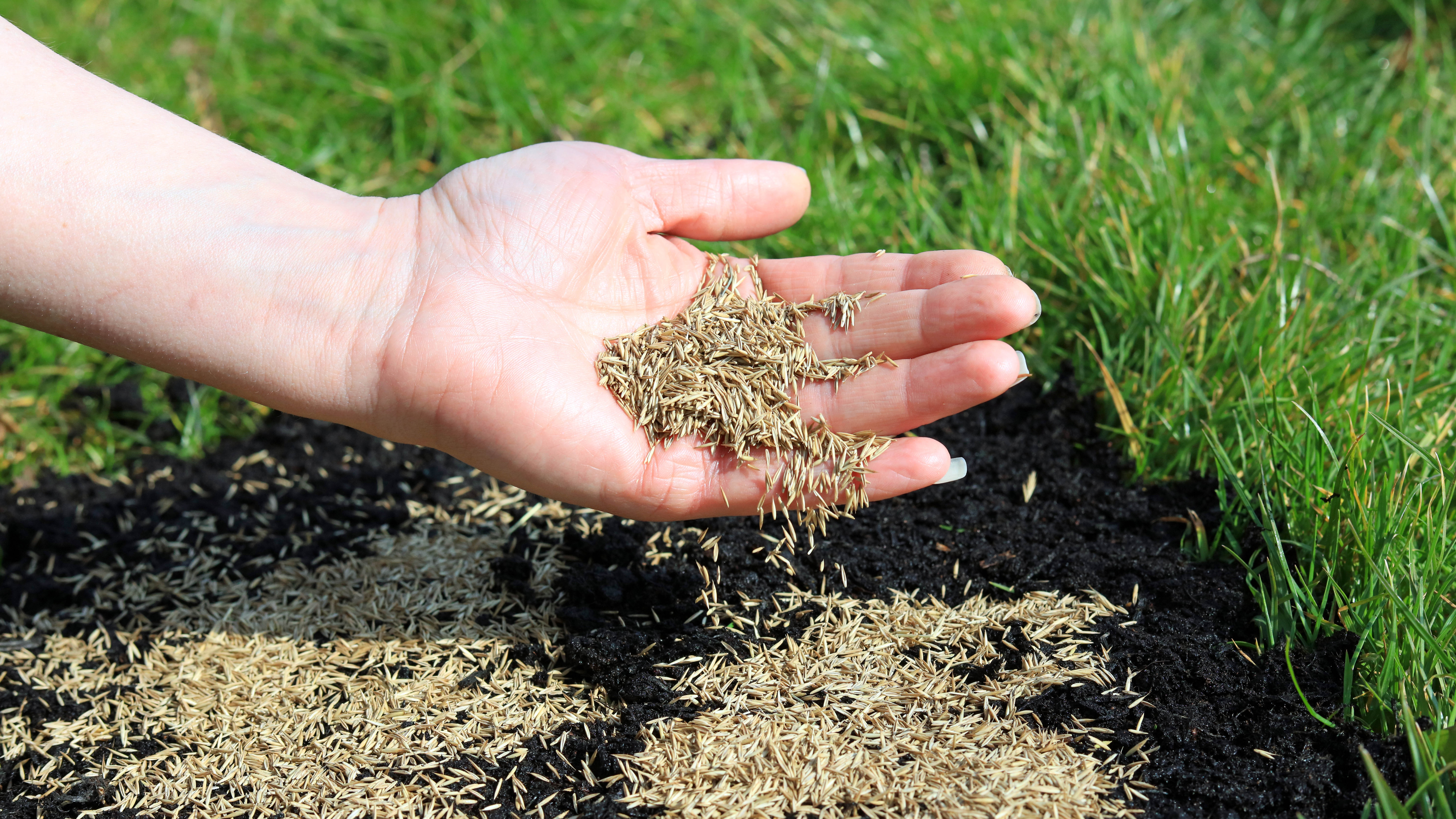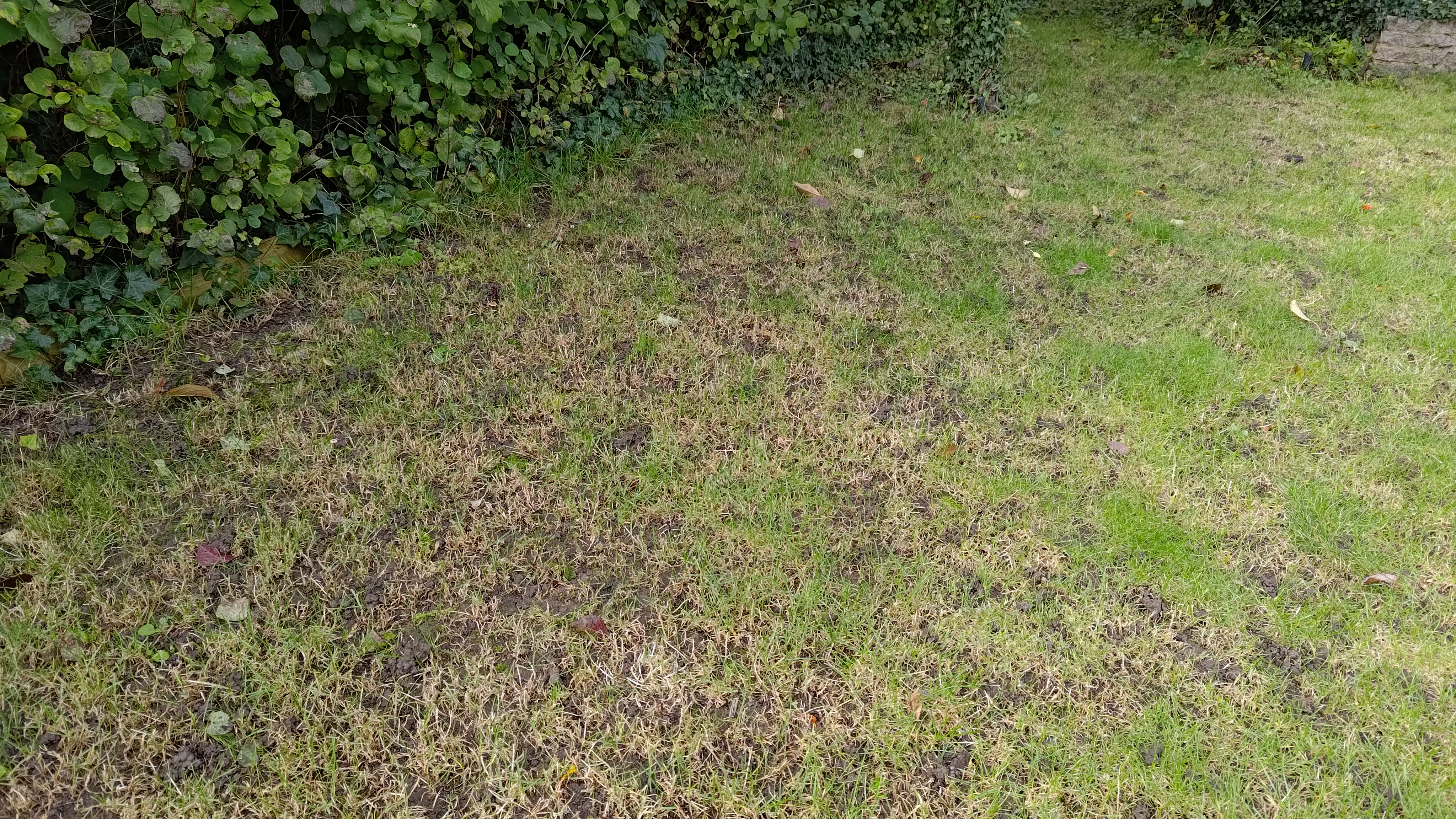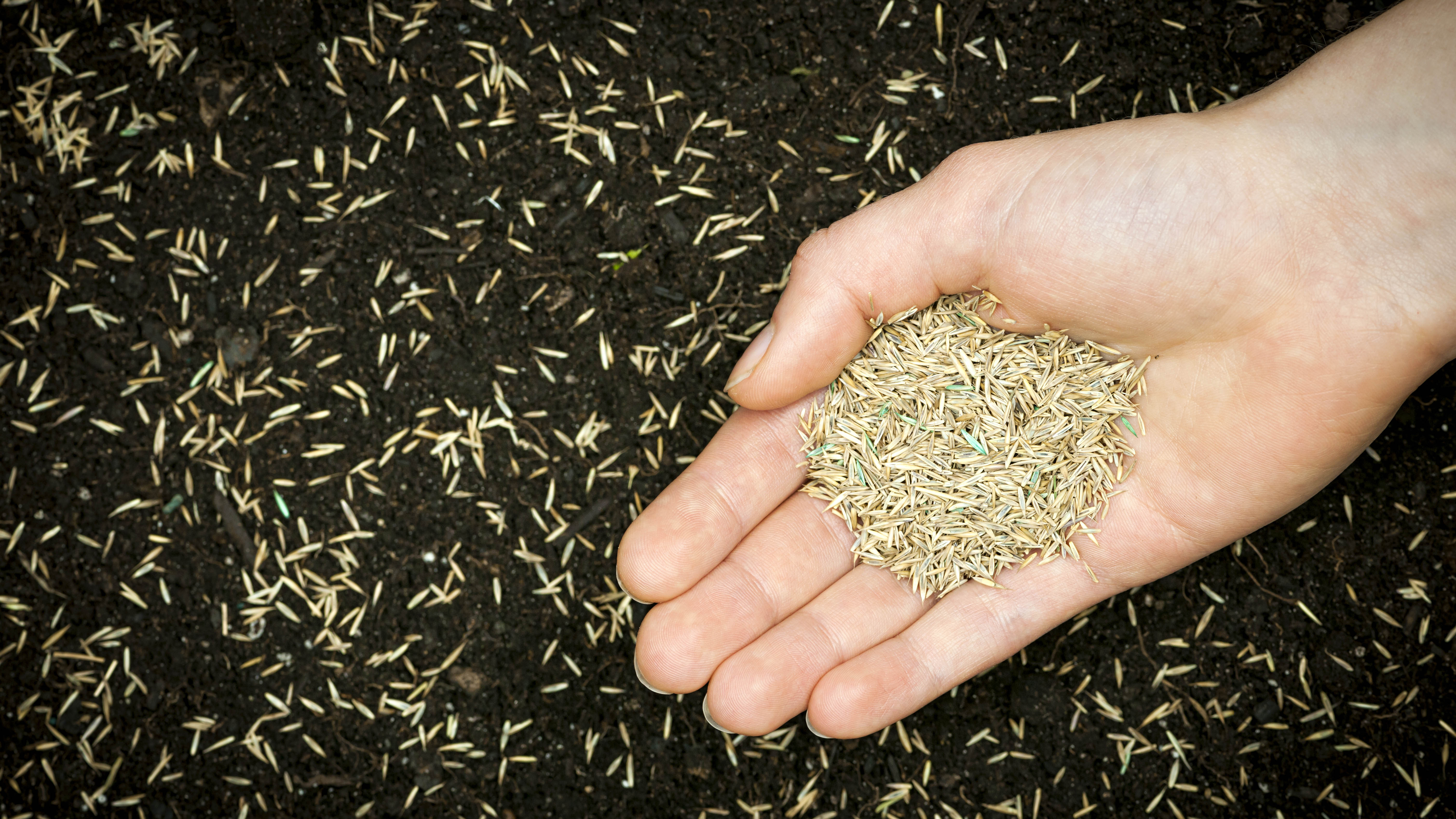I just learned this quick tip to make reseeding your lawn much easier
Some friendly neighborhood advice looks set to help save my lawn

The winter is undoubtedly a tough time for our lawns, so it’s crucial to get your grass in the best possible condition for surviving the cold weather. In fact, my colleague Cynthia covered 5 easy ways to prepare your lawn for winter recently. Speaking from experience, lawns can take a lot of punishment through the summer and fall. They’re either used as play areas, thoroughfares or a food source for various insects and birds.
This last problem is one I’ve encountered myself over the last few weeks as I sought to prepare my threadbare and churned-up lawn for the long nights and plunging temperatures. My relatively small patch of lawn is a bit of a horticultural oddity since the soil is great quality and extremely fertile but because of the direction of the garden (and neighboring trees) it gets a relatively small amount of sunlight. This problem worsens in the winter of course, when the days get longer.
Bountiful soil means worms, grubs and other tasty treats for the nearby birds that make their home in the aforementioned trees. It’s a botanical poisoned chalice because, on the one hand, it’s nice to see birds flocking around the place but, on the other, it makes spreading seed to replenish my lawn mighty difficult. As if instructed by Hitchcock himself, the birds will head straight down to the lawn the minute my back is turned and start helping themselves to my carefully-placed lawn seed.
Burying it to the required ¼ inch depth doesn’t seem to do much good, either. Either the worms will churn it back up to the surface or the birds just scrabble around like they’re looking for buried treasure.
I was bemoaning this state of affairs to my neighbor — a good friend who also happens to be a bit of a gardening expert — and asked his advice. He listened to my plight and inquired whether I had aerated my lawn.

Aerating, essentially, involves piercing or dislodging the soil to some extent to reduce compaction and allow air circulation to get into the roots. This has the added benefit of sinking lawn seed into the soil a bit to keep it away from inquisitive beaks. You can aerate your lawn with a dedicated aerator like the Ryobi ONE+ HP 18V Brushless 14" Cordless Battery Dethatcher/Aerator ($459, The Home Depot). Or you can opt for a manual one or, if you’re really counting the pennies, a metal rake.
I was happy to inform him that I had indeed aerated the lawn (you should really be doing it every year and early fall is one of the best times) but it wasn’t helping much.
That’s when he imparted a bit of lawn wisdom I’m happy to pass on to you in case it should prove helpful.
“What you need to do,” he said with a knowing look, “is mix the lawn seed in with a bit of sharp sand — you shouldn’t need more than a half a bag — and then work that into the aerated grass. It’ll stop the birds from getting at it and you should be all good.”
Mix lawn seed with sharp sand for an effective way to keep the birds away.
There it was. Just a bit of sharp sand (I live in the U.K. and from what I’ve heard, sharp sand is known as builder’s sand or masonry sand stateside) and my troubles should be over. Mix lawn seeds with sharp sand for an effective way to keep the birds away. He only told me this last weekend and I haven’t had a chance to implement the advice, but rest assured it’s rocketing up the top of my to-do list.
In fact, it’s not just sharp sand you can mix with lawn seed to deter birds looking for an easy buffet. You can actually buy bird-repellent lawn seed or invest in mesh netting (an example would be this Garden Netting Pest Barrier ($26.99, Amazon) or polythene sheeting to secure ultimate protection. My only response to those methods is they’re likely to be a bit more costly than a bag of builder’s sand that you can also repurpose elsewhere in the garden. Like if you fancy building yourself a new patio.
Meanwhile, if birds are also making a meal of any plants in your garden, here are 7 easy tips to stop birds from ruining plants in your yard.
How to plant grass seed

Let’s say your yard isn’t the victim of hungry pigeons and you can happily plant lawn seed without fear of it being eaten. There are still some things you’ll need to consider. We’ve gone over how to plant grass seed and get a greener yard here but the condensed version is planting over an existing lawn requires some prep work.
You’ll first need to mow the grass down as short as possible and try to rake over it to thin out what remains as best you can. Then you’ll need to shift to a metal rake to loosen the top ¼ inch of soil on the bare patches and remove any debris as you go. Lastly, remember to level out any uneven areas using the soil from your yard and mix in compost and fertilizer to help with growth.
Once this is done, you can evenly distribute your seeds and then carefully drag the top soil back over them, covering them until they’re about ¼ inch deep. Once you’ve done this, you can cover the seeds with mulch or compost as you like to help protect them from the wind. This last part is something I’ll also be doing once I get out into the yard to try and bring my own lawn back from the brink. Stay tuned.
More from Tom's Guide
Sign up to get the BEST of Tom's Guide direct to your inbox.
Get instant access to breaking news, the hottest reviews, great deals and helpful tips.

Jeff is UK Editor-in-Chief for Tom’s Guide looking after the day-to-day output of the site’s British contingent.
A tech journalist for over a decade, he’s travelled the world testing any gadget he can get his hands on. Jeff has a keen interest in fitness and wearables as well as the latest tablets and laptops.
A lapsed gamer, he fondly remembers the days when technical problems were solved by taking out the cartridge and blowing out the dust.
